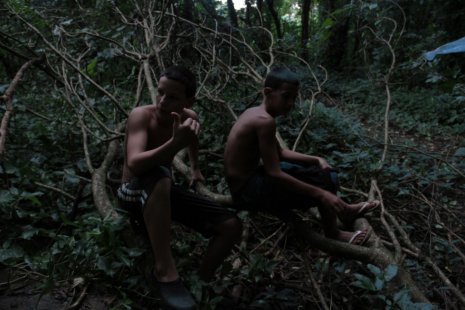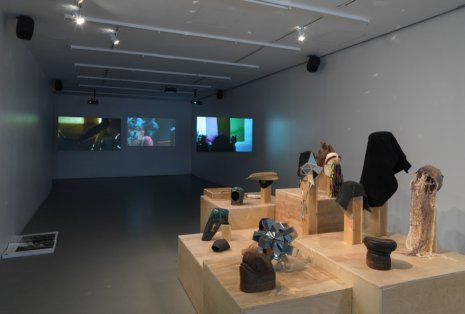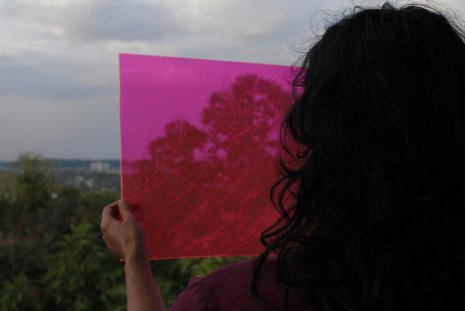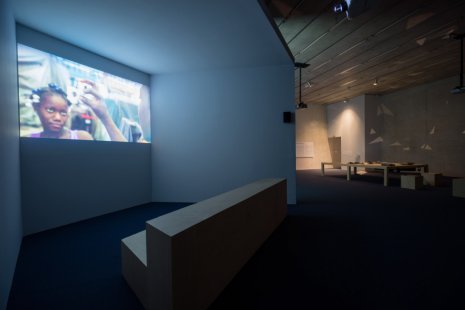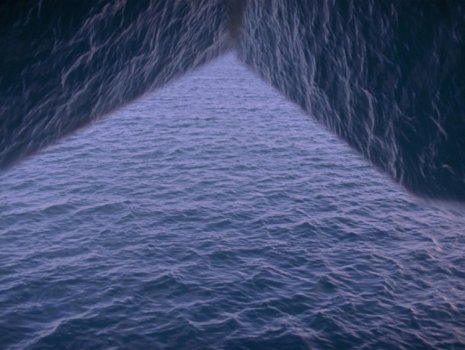Chapter One
Beatriz Santiago Muñoz interviewed by Almudena Escobar López March-April 2019
While working with non-actors, improvisation goes both ways—I improvise and they improvise. In this context, shooting is not a process of getting through a set of previously defined scenes but a coming together of thinking subjects, moving around each other, responding to each other. It has more similarities with the work that happens in musical improvisation, some forms of dance, or during some ritual practices. I think that there is something happening that is beyond the artist/audience ways of thinking about art or cinema.
What helped me think through this process, was my basic familiarity with Bomba, which is an Afro-Caribbean dance form and practice from Puerto Rico. There are many aspects I could describe but the most important part is that it is based on structured improvisation with heightened states of attention and response, and a communal performative space—el Batey—which is precisely formed by that attention. Looking and thinking about the way Bomba works allowed me to imagine new ways in which cinema could work. During shooting, there is the state of attention in which the camera operator and subject are in, responding to each other, the heightened sensorial awareness of the camera filming, and the designation of a common space where this is all taking place (the old navy base, the new forest under the highway, the central market). Simultaneously, there are also the many positions from where “the work” is happening: in Bomba there are the highly skilled drummers and dancers, but also others who participate with different levels of accessibility, children who are learning and others who - for various reasons - are only allowed to watch. If we come back to the artistic film context, these last ones with a very limited experience are the ones who would be comparable to an audience in the Western-art sense. With this I want to point out the fact that the audience is not THE position to experience art, it is just one position; it has developed in particular economic and social circumstances, but it’s a limited one and it’s focused on a passive reception of signs, as opposed to a material, physical, sensorial—and sometimes transformative experience.
This is not particular to ritual. There are many other relational transformative practices, such as musical improvisation, or a psychoanalytic session, that are not based on an author/audience relationship.
I spend a lot of time in a place or with a group of people just being with them first, listening. I think it is less about observation than about thinking, but thinking with the whole body. I am saying this because simply thinking with or through another person or place just provides different mental structures than what one brings. I have some rules for myself. I am asking a lot more of people than to let me film them—I am asking to spend time together, improvise, think, to make something new with me, to let me think with them, see with them. I think one could think about it as a process of engaging in analysis—except instead of the analysand’s individual subjectivity, we are both analysands and analysts, and it is a shared subjectivity we are trying to access.
So it is a not a little commitment. It is huge. There is never a moment where I shoot something and then go back and edit it so it takes another meaning. What we invent we invent together. In Oneiromancer (2017), Jan Susler is sleeping with the objects I made for her, in Prisoner’s Cinema (2014), Elizam Escobar is folding his clothes with a mask on, Heniel and Keniel Camacho in La Cueva Negra (2012) are improvising new versions of an origin myth, etc…I show things half-way through to them, we talk, we add things, and we think about what it means.
Then when images start circulating and we are in the realm of representation something else more troublesome starts to happen. For example, La Cueva Negra is for me, for Heniel and Keniel Camacho and for a close audience, an exploration of a really familiar, post-industrial landscape. We recognize it in our present time as new forest growth, plant species that grow out of any old crack, we know the highway well so it reads like a compression of thousands of years time in a kind of verbal and corporeal play. But when the work starts circulating and it is read as a sign, it becomes very dependent on the ideas that the audience brings to it. The work can be misread or I should simply say read, but in a new context which gives it a different meaning.
I think that this is the way representation works; the more familiar you are with something, the more direct sensorial experience of someone, the less likely it is that the person or place will be taken for a stand in or sign. For example, I make a film of my sister, it is a film of my sister to me—-very hard for her to stand in for a “woman.” Every detail of her presence is not meaningful but experiential. It is not a sign but an analogue to my experience of her. She is a singular presence. But to someone who does not know her, or have an experience of her, she is quickly flattened into a sign and instrumentalized. The same happens with places, objects, groups of people. Similarly when I show Marché Salomon (2015) in the plaza outside of the market where I shot it, it is one film where Madocheline and Marcelin are visible debating what is sacred and what is not. But when that film is shown in a place where the sign of blackness is not “Haitian citizen” then the image comes loose from experience. It is fundamental then that I understand how it operates in this later system.
When I was making Marché Salomon I was shooting, editing showing it to the actors in the market, and then editing again. My thought process with including the shot in which Madocheline and Marcelin play around poking the eyes of the beheaded goat is a good example of the process that I am describing. If I include the shot, it will shock and appear fetishistic to a non-Haitian audience. But if I cut it out, I would be forcing into the work a system of signs that is not theirs, catering it to another audience. For me, the work that I am making with them has to be primarily for them, not for other audiences consumption. Should I then make two cuts? One for the market workers and a second one to serve audiences in the US and Europe that see their everyday space as “significant?” And then if I make these two versions, the question would be if I should tell the people in the market that I am making two versions; one for them and one that suppresses this image, because it is “too meaningful?” The entire world can be “an American spectator”…we know how to adapt to that subjectivity. So I am sure first world consumer-subjectivities can adapt to others. But they resist.
I find it frustrating sometimes and I want to object! I don’t think it is inevitable. We—we who are not imagined subjects or spectators—have even been taught to see not as how we actually experience the world but as how we think someone else will see it. So we see, and then we see a “generic audience” seeing. And who is this generic audience that we imagine as the implicit spectator? I wonder how it is configured. Sometimes this process is important, a subject’s knowledge of their work-as-subject is essential for a relationship to be, at the very least, on level ground. But if we are always seeing “as others” then how will we develop other subjectivities? The monoculture keeps growing this way. Sometimes showing the work in a new context brings out interesting ideas through poetic accident, recombinant spectatorship. But other times it just flattens things out into “the same old sign.”
My feeling about systems of signs, visual languages is that there is both a constant dead weight pushing image/signs in the direction of flatness, monoculture, fixed positions and hierarchies. And then there are artists, filmmakers, and anyone who makes things, who invent from whatever trash happens to be around, because what is a Navy base if not trash. I just read a beautiful phrase in a book about the Paris Commune...the dead furniture of imperialism...we can set it on fire because it is not needed, it is not beautiful, it does not provoke nostalgia. And then what is next, we look around at the wreckage and invent.


